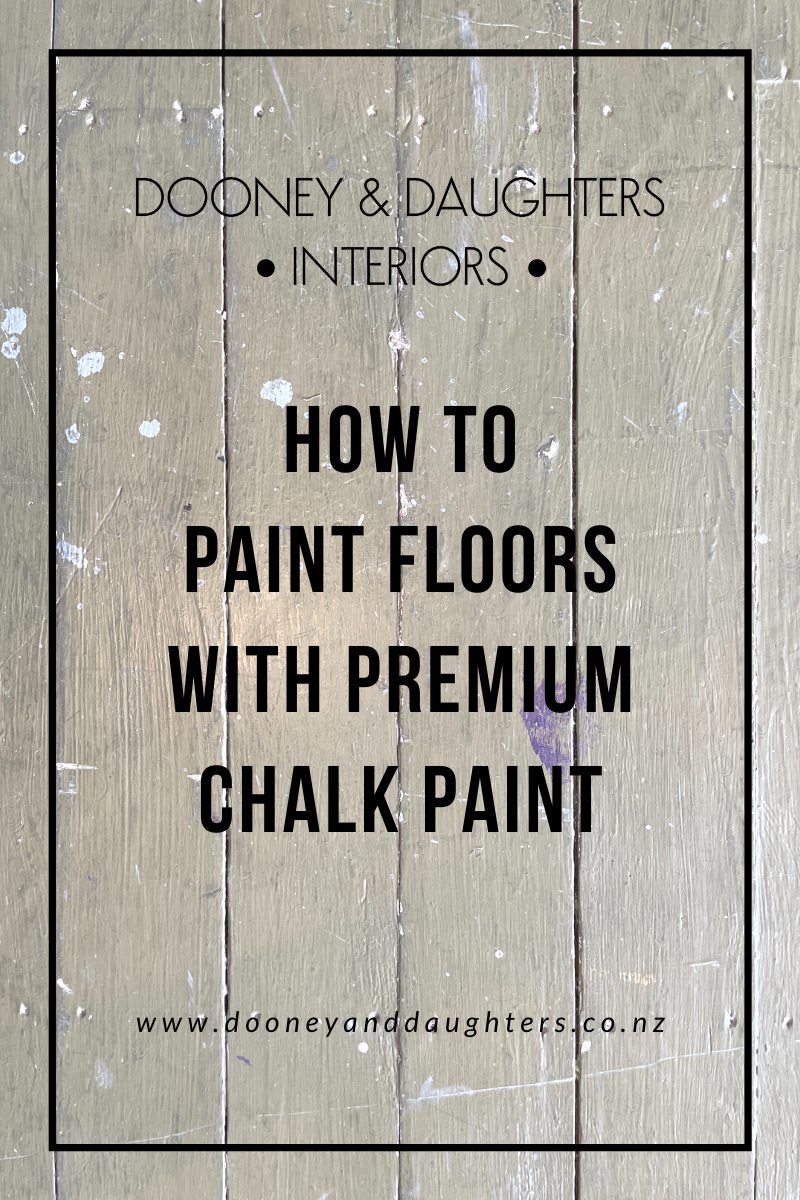
How To Paint Floors
In this blog post we will go into detail about how to paint your floors using The Artisan Company premium chalk paint.
For an introduction to floor painting see this blog post here, or watch our How To video tutorial here.

1. Prep
The beauty of using premium chalk paint is that you have little to no prep before painting.
If you have anything flaking or rough, sand first. If you have raised nail heads, make sure to hammer them back in. Remove any staples if you've ripped up carpet and clean any sticky spots with sugar soap.
Clean your floors well, we recommend vacuuming and then mopping your floors to remove all dust.

2. Tools
- Premium Chalk Paint - you can use any colour when painting your floors. The coverage is 20 square metres per litre.
- Premium Lacquer - we recommend using Matte Lacquer as it is less slippery than Satin or Gloss. The coverage for the lacquer is 20 square metres per litre.
- Slica Rim Protector - this will protect your 1L paint cans, allowing you to fully close the lids when you have finished painting.
- Paint Can Opener - this is so you open the lids without damaging them so you can fully close them when you have finished painting.
- Staalmeester 1.5 inch Flat Brush - this is your cutting in brush.
- Staalmeester 3 inch or 4 inch Flat Brush - this is your main paint brush, perfect for older floors like ours where we need to 'push' the paint into the cracks between boards.
- Wooster Roller - this is perfect for smooth floors.
- French Olive Soap - to clean your brushes and roller.
3. Chalk Paint
Once we're fully prepped, it's time for the fun part - painting!
Use your 1.5 inch flat brush to cut in as you go and bring your Wooster roller or larger brush up to where you cut in.
Make sure to load your brush with your premium chalk paint and brush it out. You want thick coats but not lots of texture.
We recommend painting in the same direction as your wood floors or laminate, you want to go with the grain for a smooth finish.
Let it fully dry before doing the next coat, this can be up to 2 hours depending on the time of year.
Paint two to three coats for full coverage. Our floors were Olea, a deep olive green, and it took three coats to get perfect coverage with Wild Tusk our off-white.

After one coat of Wild Tusk over Olea
4. Lacquer
Now that you have full coverage and your paint is dry, it's time to seal with lacquer.
Decant your lacquer into your 1L paint can mixing in approximately two tablespoons of premium chalk paint per litre of lacquer, this will tint your lacquer.
Tinting has two purposes:
- It helps to keep the true colour of your paint. This is especially important if you're using a mid to dark colour as if you accidentally use too much lacquer it can go a bit milky.
- Floors tend to have a large surface area which means that you often paint in sections (we did ours in thirds). By tinting your lacquer it blends your sections together and will hide any 'pulling' that may happen if your over brush.
Brush your lacquer (or roll) in long strokes, making sure to not brush over the same place too many times.
Let your lacquer fully dry, normally two hours, and do a second coat. The second coat will cover any missed spots and will give full protection.
Leave your lacquer to cure for as long as possible, we recommend at least a few days, and then use as normal.

The finished floors with three coats of Wild Tusk chalk paint and two coats of tinted Matte Lacquer.
5. Cleaning your brushes and roller
The beauty of The Artisan Company system is that it is all water based, making clean up a breeze!.
Simply wash your brushes or roller in water and leave to dry.
If you're struggling to get lacquer out or if your brush or roller feels a bit crunchy, use the French Olive Soap with water, this will break down the lacquer and you'll have a soft brush or roller again.
The soap is also nice and gentle on your hands.
6. Using your freshly painted floors
Once the lacquer has fully cured use your floors like normal, but beware of anything sharp or anything that may scrape your floors.
Try using felt, or similar, under chair legs or things that get moved often. This will allow your floors to last as long as possible.
To clean your floors, vacuum or sweep and use a mild detergent if you need to mop. Make sure to not use any abrasive cleaners.

Our floors are finished and back to being used regularly!
For further information on painting your floors:
- Introduction To Painting Your Floors blog post
- How To Paint Floor with Premium Chalk Paint video tutorial
- How To Paint Floors blog post
- How To Order Paint when Painting Your Floors blog post
- Floor Painting Checklist blog post
- Floor Painting FAQs blog post

